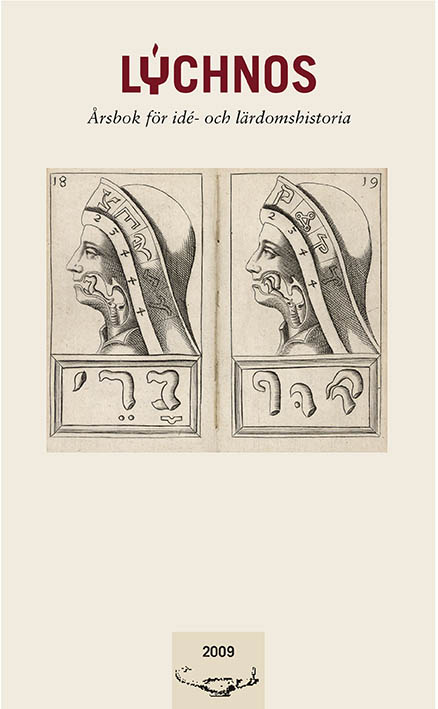In the shadow of the star
Abstract
The aim of this article is to introduce and discuss a little known film manuscript written by the Swedish astronomer and popularizer of science Knut Lundmark (1889–1958). The manuscript was Lundmark’s contribution to a competition announced by the Swedish Film Industry (SF) 1933. The manuscript did not receive an award, was never filmed and today lies forgotten in the Knut Lundmark archive at Lund University Library. The archive also holds an English translation, which Lundmark, without success, tried to persuade the Hollywood film producer Cecil B. DeMille to accept.
The topic of the manuscript deals with a short period in the history of astronomy, from Tycho Brahe’s discovery of the nova in Cassiopeia 1572 to Galileo Galilei’s first use of the telescope for astronomical observations in 1609. In his synopsis Lundmark declares that the drama tries to capture the development of ”a freer and clearer conception of the relation between man and world”. To this end the drama centers on the leading characters Tycho Brahe and Giordano Bruno. Secondary roles are played by Emperor Rudolph II, Brahe’s patron during his last years, his sister Sophie Brahe, chasing across Europe to catch her lover Erik Lange, and the fictional Lady Jane Anglesey, who tries to free Bruno from his imprisonment in Rome.
After presenting the storyline, the article discusses the main characters in some detail. Two separate themes are in focus. Firstly, and in connection with contemporary research done on archetypical depictions of scientists in fictional film, the issue is how Lundmark has created his characters. And secondly, how did he handle his explicit ambition to be true to scholarly work done within the history of science, an area in which he was well versed. In the case of Brahe, Lundmark’s historical ambitions prevented him from an archetypical representation and the portrait is actually well founded and of some nuance. Lundmark’s Bruno, on the other hand, is rather the opposite. Historical circumstances are played down and Bruno is cast as a Saviour and self-sacrificing martyr of science. The same can be said of the other characters. Emperor Rudolph shares many features with the ”mad scientist”, and the activities of the two ladies are entirely governed by their feelings for their men.
Downloads
Published
Issue
Section
License
This work is licensed under a Creative Commons Attribution 4.0 International License. The copyright for the work published in Lychnos remains with the authors.


